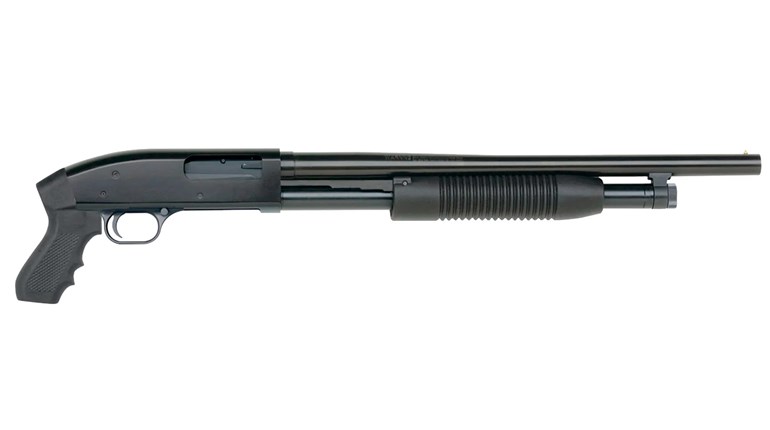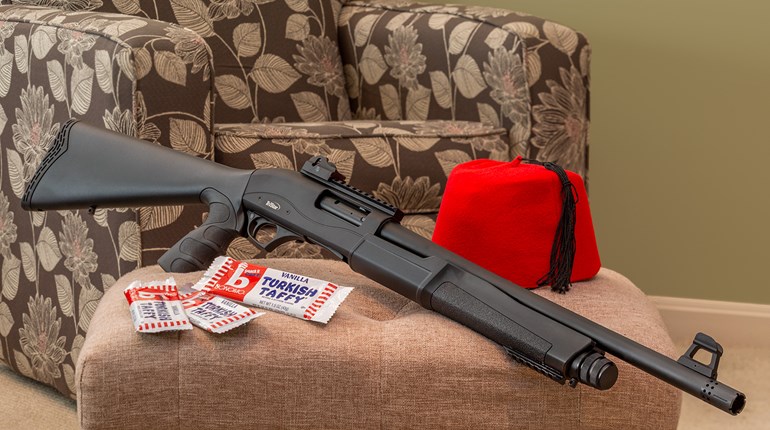** When you buy products through the links on our site, we may earn a commission that supports NRA's mission to protect, preserve and defend the Second Amendment. **

The projectiles in most shotshell loads take the form of round pellets. From the earliest years, these pellets were made exclusively of lead, but some jurisdictions require non-lead pellets...which in turn spurred the development of pellets made from steel, bismuth and tungsten.
In flight, shotgun pellets conform to the same ballistic laws as other projectiles. Their trajectory is curved so they lose velocity and energy as they fly, and they are deflected by crosswinds. Most shooters do not think of shotgun pellets in this way, as the average range at which shotguns are used is very close. Therefore, these factors aren't significant for the average shotgun shooter.
The sectional density of round shot projectiles is very poor due to their light weight. Round projectiles also have a poor ballistic coefficient, so they lose striking velocity and energy very quickly. This limits the effective range of shotshell pellets to 50 yards or so. Beyond that distance, individual pellets may not have sufficient striking energy to penetrate into the vital organs of live game. Also, the target may not receive a sufficient number of pellet hits due to low pattern density at long ranges.
Steel shot is much less dense than lead. Thus, steel shot pellets of a particular size weigh less than lead pellets of the same size. When fired at the same muzzle velocity, steel pellets have a lower ballistic coefficient, resulting in lower striking velocity and less striking energy than a lead pellet of the same diameter. To offset these limitations, ammunition makers recommend that shotgunners select steel shot two sizes larger than the lead shot they would normally use. (For example, to replace No. 6 lead shot with No. 4 steel shot.) Other lead substitutes, such as bismuth and tungsten-based alloys, are often sufficiently similar in density to lead that no such change in shot size is required.
Note that striking energy and the number of hits from each individual pellet on the target are the key factors in breaking clay targets or killing game ethically and cleanly. Serious shotgunners will carefully pattern their guns and loads to establish both the maximum range at which the minimum number of hits may be obtained, as well as to select the load that provides the most uniform pattern density at the desired range or ranges.
In flight, shotgun pellets conform to the same ballistic laws as other projectiles. Their trajectory is curved so they lose velocity and energy as they fly, and they are deflected by crosswinds. Most shooters do not think of shotgun pellets in this way, as the average range at which shotguns are used is very close. Therefore, these factors aren't significant for the average shotgun shooter.
The sectional density of round shot projectiles is very poor due to their light weight. Round projectiles also have a poor ballistic coefficient, so they lose striking velocity and energy very quickly. This limits the effective range of shotshell pellets to 50 yards or so. Beyond that distance, individual pellets may not have sufficient striking energy to penetrate into the vital organs of live game. Also, the target may not receive a sufficient number of pellet hits due to low pattern density at long ranges.
Steel shot is much less dense than lead. Thus, steel shot pellets of a particular size weigh less than lead pellets of the same size. When fired at the same muzzle velocity, steel pellets have a lower ballistic coefficient, resulting in lower striking velocity and less striking energy than a lead pellet of the same diameter. To offset these limitations, ammunition makers recommend that shotgunners select steel shot two sizes larger than the lead shot they would normally use. (For example, to replace No. 6 lead shot with No. 4 steel shot.) Other lead substitutes, such as bismuth and tungsten-based alloys, are often sufficiently similar in density to lead that no such change in shot size is required.
Note that striking energy and the number of hits from each individual pellet on the target are the key factors in breaking clay targets or killing game ethically and cleanly. Serious shotgunners will carefully pattern their guns and loads to establish both the maximum range at which the minimum number of hits may be obtained, as well as to select the load that provides the most uniform pattern density at the desired range or ranges.







































